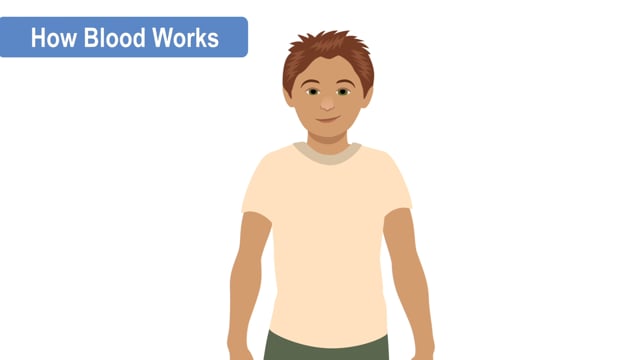- Home
- Humana Medicaid
- Kentucky Medicaid
- Medicaid extras
- Health and wellness
- Parents Home
- Para Padres
- A to Z Dictionary
- Allergy Center
- Asthma
- Cancer
- Diabetes
- Diseases & Conditions
- Doctors & Hospitals
- Emotions & Behavior
- First Aid & Safety
- Flu (Influenza)
- Food Allergies
- General Health
- Growth & Development
- Heart Health & Conditions
- Homework Help Center
- Infections
- Newborn Care
- Nutrition & Fitness
- Play & Learn
- Pregnancy Center
- Preventing Premature Birth
- Q&A
- School & Family Life
- Sports Medicine
- Teens Home
- Para Adolescentes
- Asthma
- Be Your Best Self
- Body & Skin Care
- Cancer
- Diabetes
- Diseases & Conditions
- Drugs & Alcohol
- Flu (Influenza)
- Homework Help
- Infections
- Managing Your Weight
- Medical Care 101
- Mental Health
- Nutrition & Fitness
- Q&A
- Safety & First Aid
- School, Jobs, & Friends
- Sexual Health
- Sports Medicine
- Stress & Coping
Thrombocytopenia
What Is Thrombocytopenia?
Thrombocytopenia (pronounced: throm-buh-sye-tuh-PEE-nee-uh) is when there aren't as many normal platelets in the blood as there should be. Platelets are tiny colorless cells in the blood that help the blood clot. Like all blood cells, platelets are made in the bone marrow (the spongy inner part of bones).

How Blood Works
Blood helps the parts of our body work as they should. In this video, learn how blood brings oxygen and nutrients around the body and helps fight off infections.
What Are the Signs & Symptoms of Thrombocytopenia?
A person with a platelet count that is only a little low may not have any symptoms. But if the count drops low enough, someone might have one or more of these problems:
- easy bruising
- bleeding gums
- bleeding from minor wounds or nosebleeds that's hard to stop
- small red or purple spots in the skin called petechiae (pronounced: puh-TEEK-ee-uh or puh-TEEK-ee-eye)
- large dark spots that can be felt under the skin called purpura (pronounced: PURR-pyuh-ruh or PURR-purr-ruh)
- blood in vomit, urine (pee), or stool (poop)
The most serious type of bleeding that can happen is bleeding in the brain. Bleeding in or around the brain can't be seen, but it can cause headaches or changes in thinking or behavior.
What Causes Thrombocytopenia?
Many things can cause thrombocytopenia. Some are very serious and need medical treatment. Others are not serious and may clear up on their own with time.
Causes of thrombocytopenia include:
- chemotherapy, which can kill or injure the cells that make platelets
- other medicines, which may suppress production of platelets
- immune thrombocytopenic purpura (ITP), where the immune system destroys platelets
- viral infections, such as mononucleosis (mono)
- leukemia, a kind of blood cancer
- bone marrow failure (sometimes called aplastic anemia)
- autoimmune diseases like lupus
- some inherited (genetic) problems
- other health conditions that destroy platelets or use them up too quickly
How Is Thrombocytopenia Diagnosed?
A doctor may suspect thrombocytopenia if someone has:
- easy bleeding
- bruising
- red spots on the skin
The doctor will examine the person, ask questions, and order a blood test called a complete blood count (CBC).
If thrombocytopenia is diagnosed, more tests are done to figure out what's causing it. The tests needed depend on the person's , the exam results, and what the blood test shows.
Sometimes, doctors order a biopsy to get a sample of bone marrow for testing and to check under a microscope.
How Is Thrombocytopenia Treated?
The treatment for thrombocytopenia depends on:
- what's causing it
- how low the platelet count is
- whether or not there is bleeding
Sometimes no treatment is needed and the thrombocytopenia clears up on its own. But some types need medical treatment to raise the platelet count to a safer level and to treat the underlying cause.
Thrombocytopenia is usually treated by a , a doctor who specializes in diagnosing and treating blood disorders.
What Else Should I Know?
Most of the time, thrombocytopenia either goes away on its own or can be treated successfully. But anyone with a low platelet count should take care to avoid injuries, especially to the head, because of the risk of bleeding.
If you have thrombocytopenia, the doctor will tell you which activities are safe and which to avoid. You also shouldn't take medicines that contain ibuprofen (such as Motrin or Advil) or aspirin because these can increase the risk of bleeding.

© 1995- The Nemours Foundation. KidsHealth® is a registered trademark of The Nemours Foundation. All rights reserved.
Images sourced by The Nemours Foundation and Getty Images.